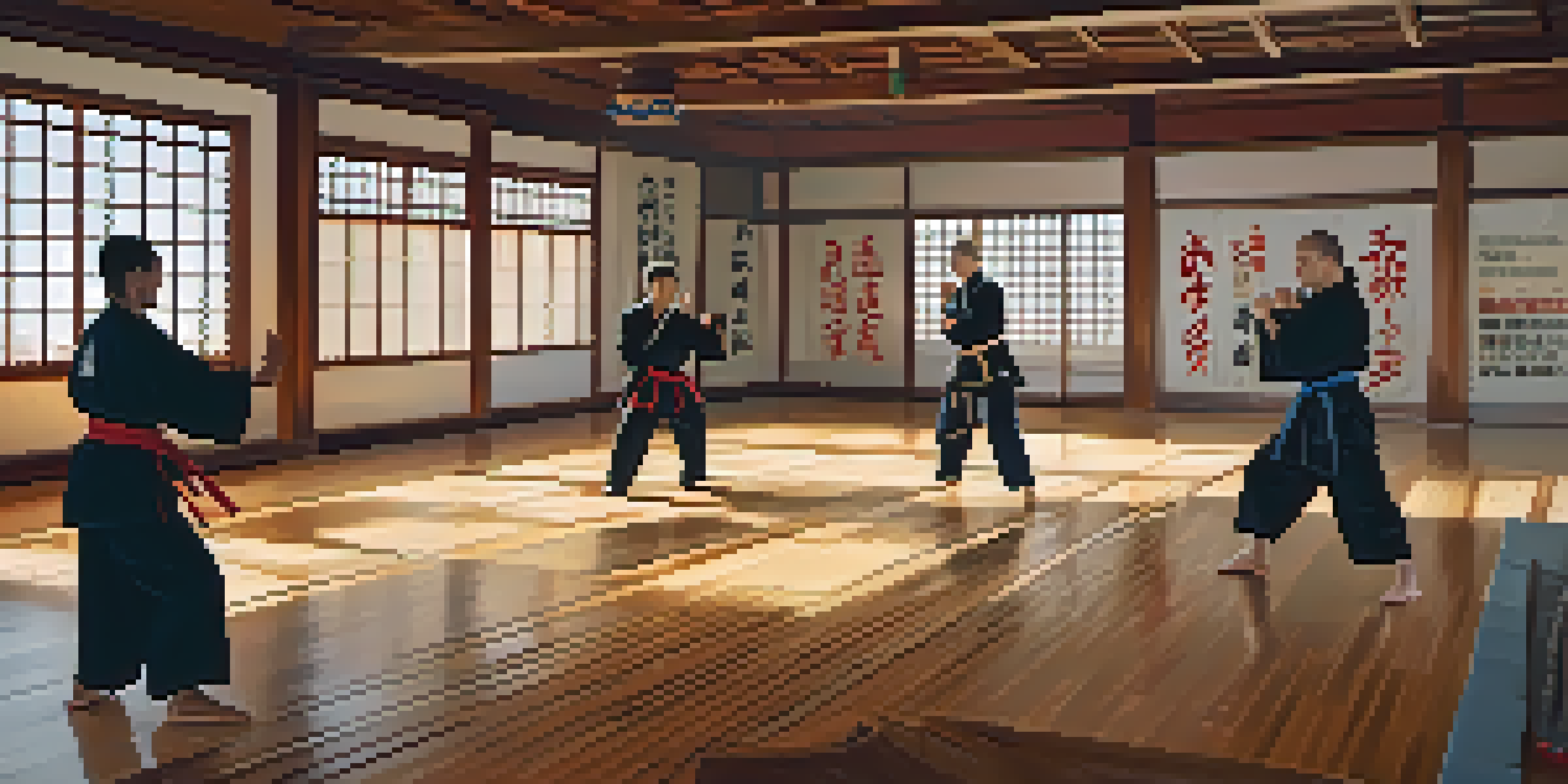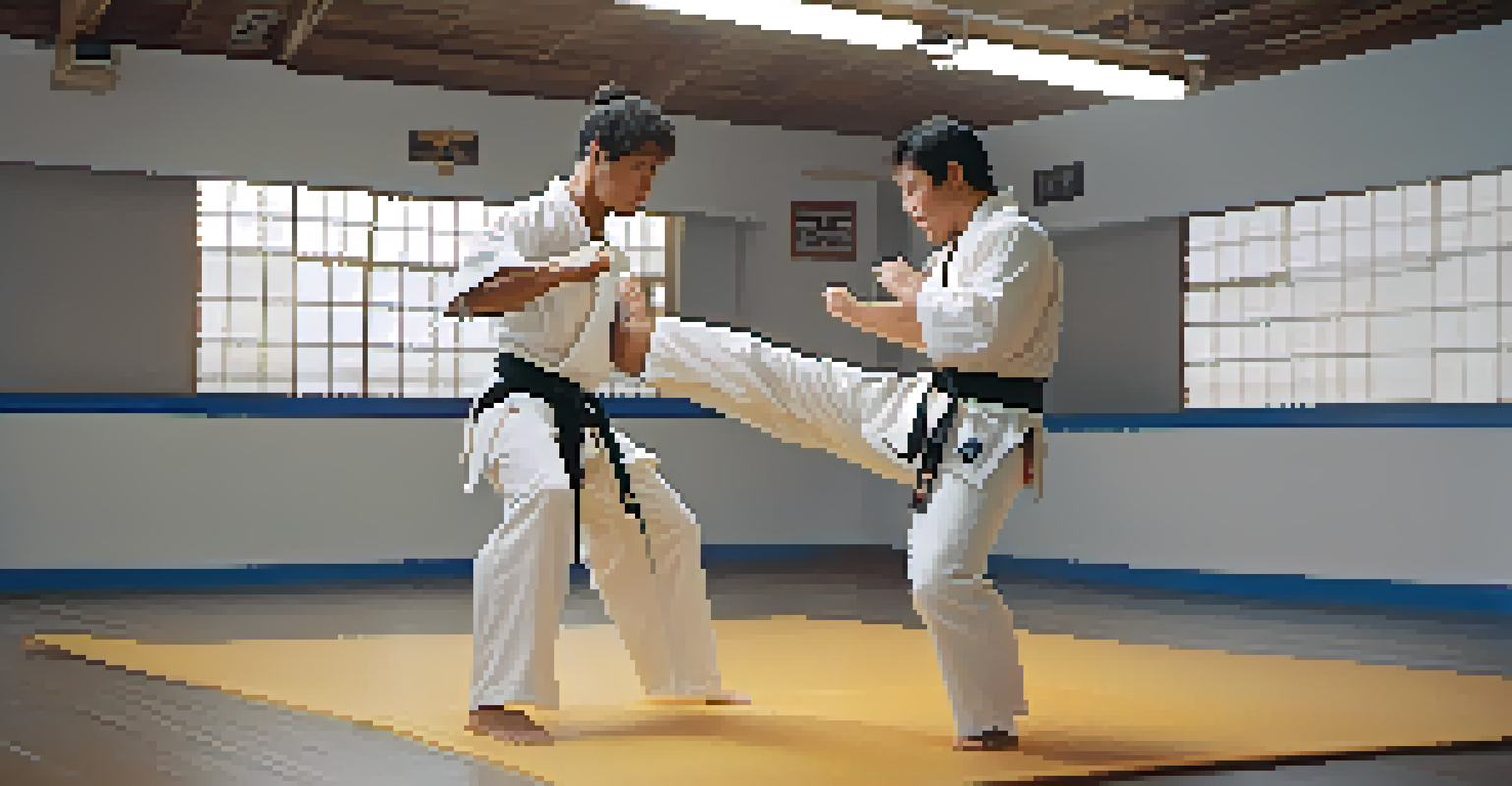How to Choose the Right Self Defense Training Program

Understanding Your Goals for Self Defense Training
Before diving into self-defense training, it’s important to clarify your goals. Are you looking to build confidence, improve your fitness, or learn specific techniques? Knowing your objectives will help you narrow down which programs align with your needs.
Self-defense is not just about physical strength; it's about mental preparedness and awareness of your surroundings.
For instance, if your main goal is personal safety, you might want to focus on programs that emphasize practical techniques over fitness. Conversely, if building strength and endurance is your aim, consider a program that incorporates physical conditioning along with self-defense skills.
Taking the time to define your goals will not only guide your choices but also keep you motivated throughout your training journey.
Researching Different Self Defense Styles
Self-defense training comes in various styles, each with its unique approach and techniques. From Brazilian Jiu-Jitsu to Krav Maga, understanding the differences can help you make an informed decision. Some styles focus on grappling and ground fighting, while others prioritize striking and situational awareness.

For example, if you prefer a more fluid and adaptable style, Brazilian Jiu-Jitsu might appeal to you. On the other hand, if you want a program that teaches you how to respond to various threats quickly, Krav Maga could be a better fit.
Research Training Styles
Understanding different self-defense styles allows you to select one that resonates with your preferences.
Exploring different martial arts can be a fun and enlightening experience. Attend introductory classes or watch videos to see which styles resonate with you.
Evaluating Instructors and Their Qualifications
The instructor's experience and teaching style play a crucial role in your self-defense training experience. Look for a qualified instructor who has a strong background in the style you’re interested in. Certifications, competition experience, and teaching history can be good indicators of their expertise.
Training is the foundation of confidence; it's not just about learning moves, but about discovering your capabilities.
Moreover, consider how the instructor’s teaching style matches your learning preferences. Some people thrive in a structured environment, while others may prefer a more relaxed, conversational approach. Don’t hesitate to ask potential instructors about their philosophies and methods.
A good instructor will not only teach you techniques but also foster a supportive environment where you feel comfortable learning and growing.
Assessing Class Size and Training Environment
The size of the class and the environment can significantly impact your learning experience. Smaller classes often provide more personalized attention, allowing you to receive immediate feedback on your techniques. On the flip side, larger classes might offer diverse training partners and more opportunities to practice.
Consider what kind of environment makes you feel most comfortable. Do you prefer a bustling dojo full of energy, or a quiet space where you can focus? Visiting potential training locations can help you gauge the atmosphere and see if it aligns with your preferences.
Define Your Self-Defense Goals
Clarifying your objectives helps you choose the right training program tailored to your needs.
Ultimately, finding a balance that suits you is key to staying engaged and motivated in your training.
Understanding the Curriculum and Training Methods
Each self-defense program will have a unique curriculum that outlines what skills and techniques you'll learn. Take the time to review the curriculum and ensure it covers the topics that matter most to you. For instance, will you learn how to escape common holds, or focus on striking techniques?
Additionally, consider the training methods used. Do they incorporate realistic scenarios and sparring, or is the focus primarily on drills? Programs that simulate real-life situations can be incredibly beneficial, as they allow you to practice techniques under pressure.
A well-rounded curriculum not only teaches techniques but also prepares you mentally and physically for real-world situations.
Considering Location and Accessibility
Practicality is a crucial factor when choosing a self-defense training program. The location of the training facility should be convenient for you to ensure consistent attendance. If a class is too far away, you may find it challenging to stay committed.
Also, check the schedule of classes to see if they fit your lifestyle. Some programs offer evening or weekend classes, which can be a lifesaver for busy individuals. Flexibility in scheduling can make a big difference in maintaining your motivation and progress.
Assess Instructors and Classes
Evaluating instructors and class environments is essential for ensuring a supportive and effective learning experience.
Choosing a location that is both accessible and fits your schedule will help you stay dedicated to your self-defense training.
Reading Reviews and Seeking Recommendations
Before making a final decision, take the time to read reviews and seek recommendations from others. Online reviews can provide insights into the experience of past students, helping you gauge the program’s effectiveness. Look for comments about the instructor, class atmosphere, and overall satisfaction.
If you know someone who has trained in self-defense, ask for their recommendations. Personal experiences can often illuminate strengths or weaknesses of a program that you might not find in reviews.

Remember, the collective experiences of others can be a valuable resource in guiding your choice.
Trying Out a Class Before Committing
Many self-defense programs offer trial classes or introductory sessions, which can be a great way to test the waters before making a commitment. Taking a class will give you a feel for the instructor’s teaching style, the class dynamics, and whether the program aligns with your goals.
This trial experience can also help you assess the training environment and see if it feels like a good fit. Pay attention to how you feel during and after the class—are you excited to learn more, or do you feel overwhelmed?
Ultimately, trying out a class can be one of the best ways to ensure that you’re making the right choice for your self-defense journey.